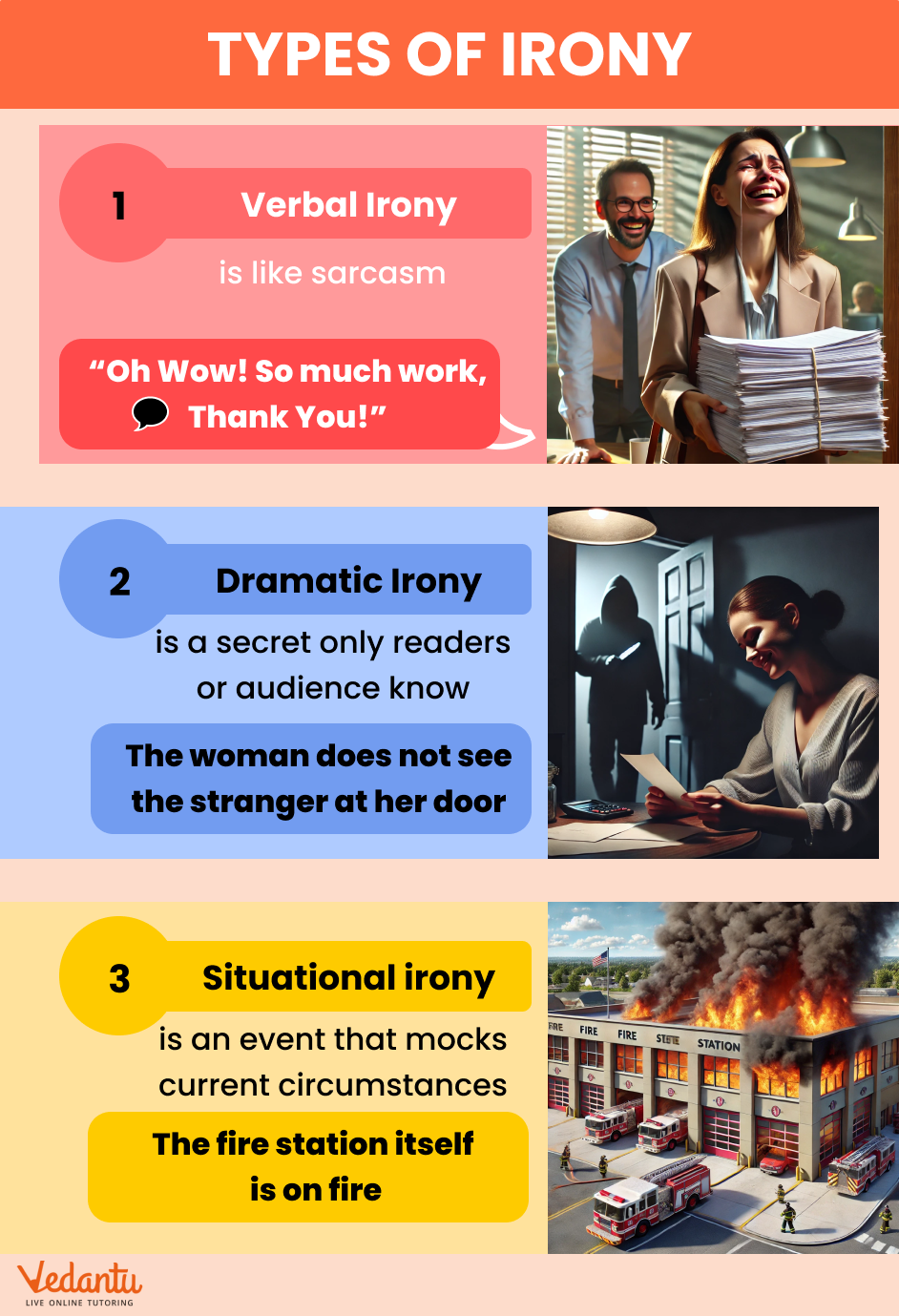




Understanding Irony Structure
FAQs on Irony: Understanding and Using Irony in Writing
1. What is irony?
Irony is a literary device or figure of speech where the intended meaning of words is different from their actual meaning. It often involves a contrast between expectations and reality.
2. What are irony examples?
Examples of irony include a fire station burning down (situational irony) or a character saying, "Oh, great!" in a terrible situation (verbal irony).
3. What is dramatic irony?
Dramatic irony occurs when the audience knows something that the characters do not, creating suspense or humour. For example, in a play, the audience might know the true identity of a character while others do not.
4. Can you provide irony examples sentences?
Sure! Here are a few:
"The police station was robbed last night."
"I just love waiting in long lines!" (said sarcastically).
"The plumber’s house had leaky pipes."
5. What is an Irony figure of speech?
Irony as a figure of speech refers to the use of words to convey a meaning that is opposite of what is said or expected. It can be verbal, situational, or dramatic.
6. What are the types of irony?
The three main types of irony are:
Verbal Irony: Saying the opposite of what is meant.
Situational Irony: When the outcome is different from what was expected.
Dramatic Irony: When the audience knows something that the characters do not.
7. What are verbal irony examples?
Verbal irony examples include:
Saying "What a beautiful day!" during a storm.
"Oh, fantastic! I missed the bus again!"
8. Can you give situational irony examples?
Examples of situational irony include:
A pilot with a fear of heights.
A fire station that burns down.
9. How does dramatic irony work in stories?
Dramatic irony works by giving the audience knowledge that characters in the story don’t have, creating tension, humour, or emotional impact as the story unfolds.
10. Why is irony important in literature?
Irony is important in literature because it adds depth to stories, creates humour, builds suspense, and often highlights the contrast between appearance and reality. It engages the reader by encouraging them to think critically about the text.























